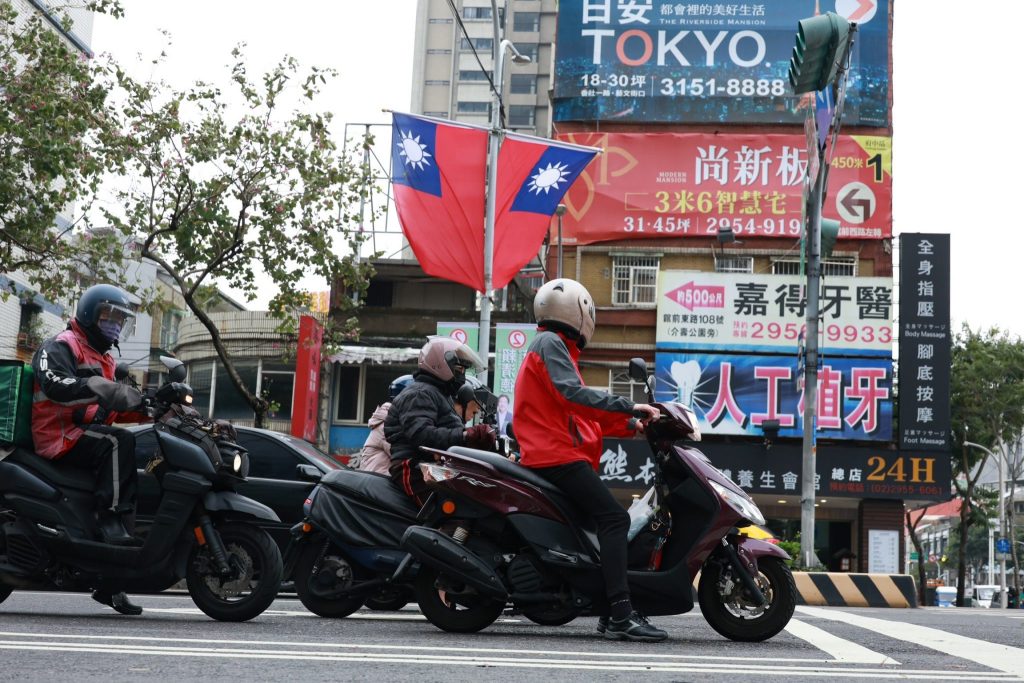Taiwan’s GDP growth declined to 1.4 per cent in 2023, down from 2.6 per cent the previous year and
6.6 per cent in 2021. The economic slowdown raises questions about its future prosperity and makes
a strong national defence less likely.
The economic deceleration in 2023 is mainly due to soft global demand and weak domestic capital investment. Yet, post-COVID-19 private consumption has thrived.
In addition to Taiwanese people’s growing expenditure, the increasing number of foreign tourists, following the relaxation of COVID-19 travel restrictions, contributed to the surging private consumption. Taiwan’s total visitor arrivals reached nearly 5 million between January and October in 2023, up from 896,000 in the whole of 2022.
Though Taiwan’s inflation rate is relatively low compared to most Western countries, wage growth did not keep pace with inflation. The average inflation rate in the first three quarters of 2023 was 2.4 per cent, higher than the real total wage growth (–0.78%) in the same year, according to the National Statistics.
The higher inflation rate is particularly true for food, disproportionately affecting low-income individuals. Taiwan’s Gini coefficient — a commonly used measure for household income inequality — grew from 0.29 in 1985 to 0.34 in 2022.
Taiwan’s effort to maintain export competitiveness at the expense of workers’ remuneration is leading to growing income inequality. The government’s attempt to address this issue through transfer payments for social welfare has squeezed the government budget for national defence. The portion of total government expenditure dedicated to social welfare increased from 9 per cent in 1994 to 27 per cent in 2022. During the same period, budgeted expenditure for national defence shrank from 24 per cent to 16 per cent.
Taiwan’s rapidly aging population will add another burden to the public finances. The United Nations estimates that the share of the population aged 65 and above in Taiwan will increase from 15 per cent in 2019 to 35 per cent in 2050.
In the face of China’s incessant military threat, growing government expenditure on social welfare and the aging population calls into question Taiwan’s ability to fund a strong military.
A strong economy was key in supporting Taiwan’s national defence during the Cold War. Between 1951 and 1991 — when the economy was flourishing — Taiwan allocated 6–11 per cent of its GDP to strengthening its national defence. Since the 2000s, Taiwan has lost speed on economic growth. Greater demand for social welfare expenditure has reduced military expenditure as a percentage of GDP from 10 per cent in 1961 to 6 per cent in 1991. Despite a higher defence budget, Taiwan’s military expenditure will account for only 2.6 per cent of its GDP in 2024.
Since the 1990s, Taiwan has relied on exporting technology intensive industrial goods to China to sustain economic growth. China’s economic liberalisation, following its political reconciliation with the United States, has made the cross-strait production network workable. But China’s mounting political conflict with the United States, real estate crisis, household consumption stagnation and growing local government debts suggest that China is no longer reliable for Taiwan to boost its economy.
Taiwan’s growth model, based on exporting intermediate goods to China for final assembly, is changing. China and Hong Kong’s share in Taiwan’s total exports shrank to 35 per cent in 2023, from 44 per cent in 2020. Meanwhile, the combined shares of exports to the United States, Europe and ASEAN countries increased by 7 per cent.
In the first three quarters of 2023, Taiwan’s investment in China declined by 17 per cent to US$2.5 billion, far less than Taiwan’s investment in the United States — US$9.6 billion — and slightly higher than the US$2.3 billion investment in Singapore. Taiwan’s investment decline in China started before 2013 due to China’s wage hikes, stricter labour and environmental standards. The US–China geopolitical tensions since 2018 have accelerated the investment relocation. Apart from the ongoing US–China geopolitical tensions, China’s economic slowdown, the Chinese government’s crackdown on private business and its growing hostility toward foreign investors will continue to drive Taiwan’s investment away from China.
Taiwan is at the watershed of its economic development. It maintained high speed economic growth for 30 years through exporting final consumption goods to the United States. Taiwan sustained moderate economic growth for another 30 years through exporting intermediate goods to China. It is time to embark on another 30 years with a new growth model.
The trade and investment figures show that Taiwan could develop closer economic ties with Southeast Asian countries, the United States and India. Greater institutionalised economic partnerships with these countries will help Taiwan’s transition to the next stage of economic growth.
Amid a volatile geopolitical environment and China’s uncertain political and economic outlook, relying on China for boosting its economy is no longer a viable option for Taiwan. Economic diversification is key to securing modest economic growth, alleviating the government’s financial burdens related to balancing income inequality and funding the aging population. A stronger economy will also enable Taiwan to cover potentially substantial military expenses to better secure the country from China’s military threats.
Min-Hua Chiang is Adjunct Fellow at the East-West Center in Washington D.C.
This article is part of an EAF special feature series on 2023 in review and the year ahead.

